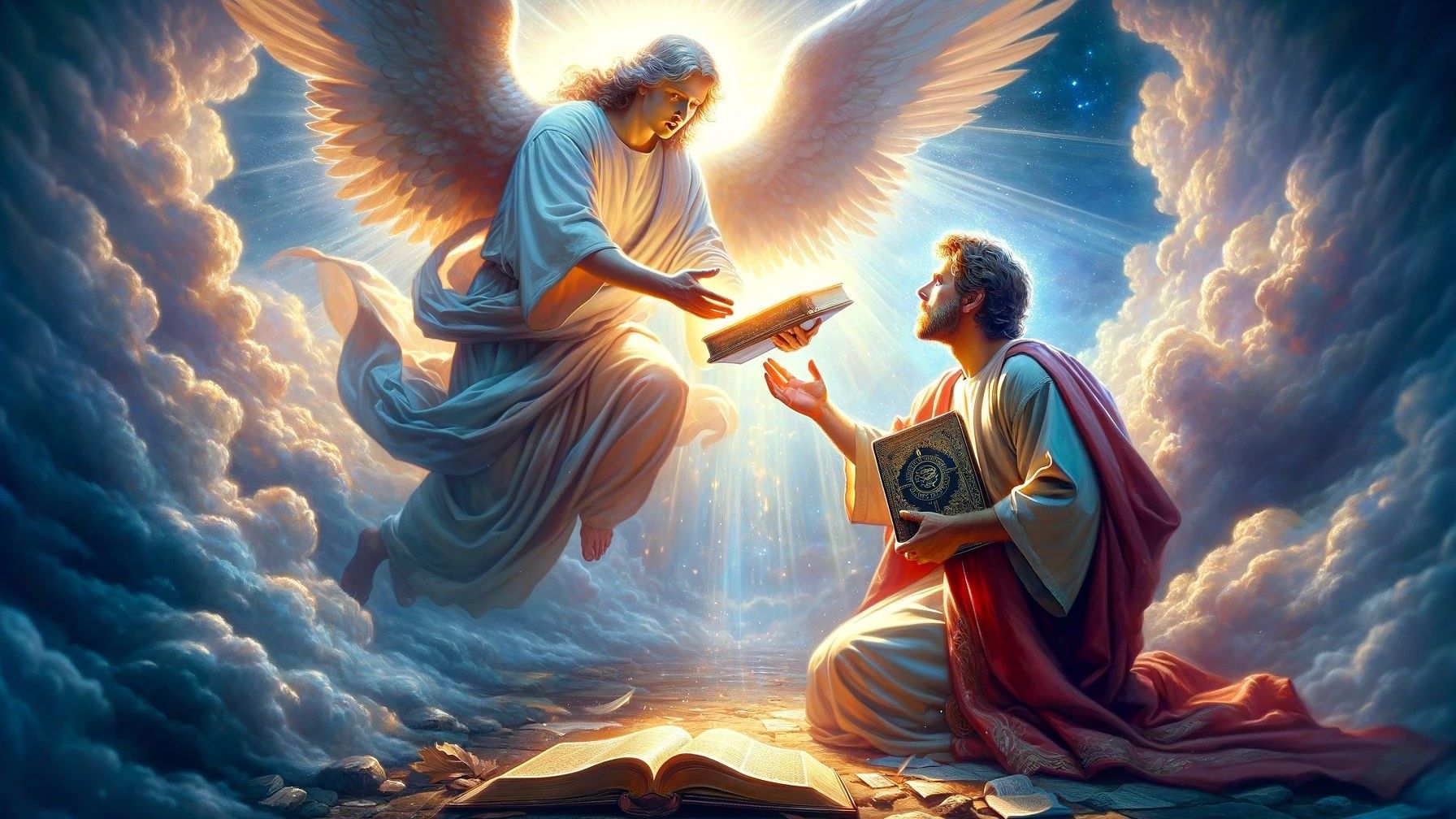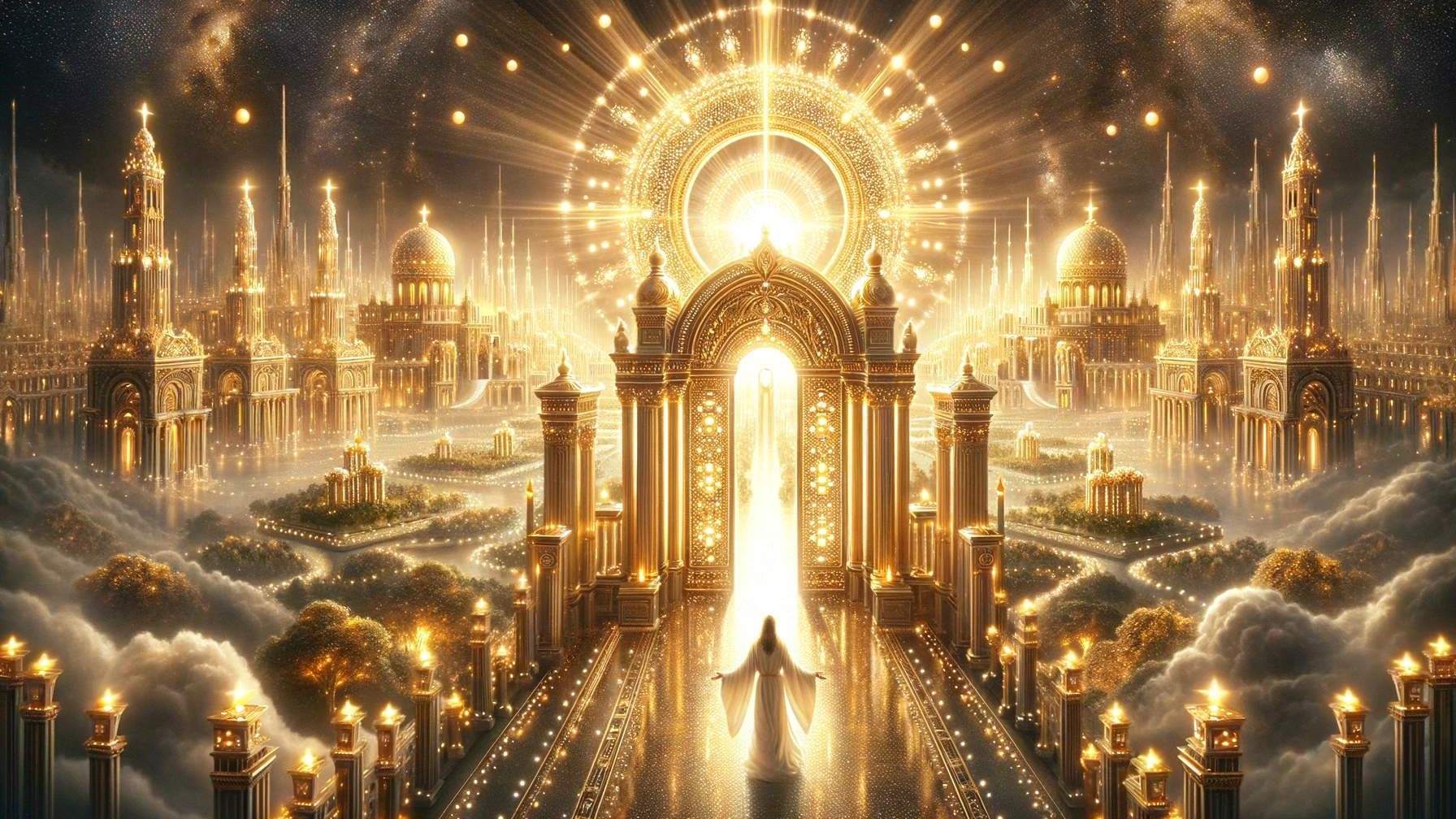Home>Bible Facts>What Is Babylon In The Book Of Revelation


Bible Facts
What Is Babylon In The Book Of Revelation
Published: February 11, 2024
Peter Smith, Editorial Director at Christian.net, combines deep insights into faith, politics, and culture to lead content creation that resonates widely. Awarded for his contributions to religious discourse, he previously headed a major organization for religious communicators, enhancing dialogue on faith's societal impacts.
Discover the significance of Babylon in the Book of Revelation and explore fascinating Bible facts. Uncover the mysteries of this ancient city and its relevance to biblical prophecy.
(Many of the links in this article redirect to a specific reviewed product. Your purchase of these products through affiliate links helps to generate commission for Christian.net, at no extra cost. Learn more)
Table of Contents
Introduction
The mention of Babylon in the Book of Revelation has sparked curiosity and debate among scholars, theologians, and readers of the Bible for centuries. This ancient city, steeped in historical and symbolic significance, holds a prominent place in biblical prophecy, particularly in the apocalyptic visions recorded by the apostle John. As we delve into the multifaceted layers of Babylon's representation in the Book of Revelation, we will unravel its profound implications and explore the diverse interpretations that have emerged over time.
The Book of Revelation, also known as the Apocalypse, is the final book of the New Testament, attributed to the apostle John. It is a visionary work that offers a glimpse into the culmination of human history, the ultimate triumph of good over evil, and the establishment of God's eternal kingdom. Within its pages, vivid imagery, symbolic language, and prophetic messages intertwine to convey profound truths and warnings to the early Christian communities and future generations.
Babylon, as a recurring motif in the Book of Revelation, serves as a focal point for understanding the spiritual, political, and cosmic conflicts depicted in John's apocalyptic visions. Its significance extends beyond a mere historical reference to the ancient city in Mesopotamia, encompassing broader implications that resonate with the struggles and triumphs of God's people throughout the ages. As we embark on this exploration, we will navigate through the historical background of Babylon, its portrayal in the Old Testament, and its symbolic manifestations in the Book of Revelation, shedding light on the rich tapestry of meanings woven into this enigmatic symbol.
The enigma of Babylon in the Book of Revelation invites us to embark on a journey of discovery, where ancient history converges with eschatological visions, inviting contemplation and interpretation. As we unravel the layers of symbolism and meaning associated with Babylon, we will gain insights into the enduring relevance of biblical prophecy and the profound truths embedded in the sacred text. Join us as we embark on a captivating exploration of Babylon in the Book of Revelation, delving into its historical, symbolic, and spiritual dimensions to glean a deeper understanding of its significance in the grand tapestry of biblical prophecy.
Read more: What Is The Last Book Of Revelation
Historical background of Babylon
Babylon, an ancient city nestled in the heart of Mesopotamia, holds a storied legacy that spans millennia. Its origins can be traced back to the early third millennium BCE, when it emerged as a small Akkadian town. Over time, Babylon burgeoned into a thriving metropolis, renowned for its architectural marvels, advanced infrastructure, and cultural sophistication. The city's strategic location along the Euphrates River facilitated trade and commerce, propelling it to prominence as a hub of economic activity and cultural exchange.
Under the reign of Hammurabi, the sixth king of the First Babylonian Dynasty, Babylon experienced a golden age marked by remarkable achievements in governance, law, and urban development. Hammurabi's Code, a comprehensive legal system inscribed on a stele, exemplified the city's commitment to justice and societal order, laying the groundwork for future legal principles.
Babylon's ascendancy continued through successive dynasties, including the Neo-Babylonian Empire under the rule of Nebuchadnezzar II. Notably, Nebuchadnezzar II oversaw ambitious construction projects, most notably the iconic Hanging Gardens of Babylon, one of the Seven Wonders of the Ancient World. These architectural feats, coupled with the city's imposing fortifications and grandeur, solidified Babylon's reputation as a marvel of antiquity.
However, Babylon's grandeur was not immune to the tides of history. In 539 BCE, the Persian king Cyrus the Great conquered the city, marking the end of the Neo-Babylonian Empire. Despite subsequent periods of revival and cultural significance, Babylon gradually waned in influence, eventually fading into obscurity.
The historical tapestry of Babylon, characterized by periods of splendor, conquest, and cultural diffusion, underscores its enduring legacy as a symbol of power, opulence, and the ebb and flow of human civilization. This rich historical backdrop provides a compelling context for understanding the multifaceted representations of Babylon in the Book of Revelation, where its symbolic resonance transcends temporal boundaries, inviting contemplation and interpretation.
As we delve into the intricate tapestry of Babylon's historical narrative, we gain a deeper appreciation for its enduring imprint on the annals of human history and its significance as a symbol that reverberates through the corridors of time.
Babylon in the Old Testament
In the Old Testament, Babylon occupies a pivotal role in shaping the narrative of ancient Israel and the prophetic voices that echoed through the corridors of time. The mention of Babylon evokes a complex tapestry of historical events, spiritual significance, and divine judgment, intertwining the destinies of nations and the unfolding drama of God's redemptive plan.
The Babylonian exile, a watershed moment in Israel's history, serves as a focal point for understanding the profound impact of Babylon within the Old Testament. In 586 BCE, the Babylonian king Nebuchadnezzar II besieged Jerusalem, leading to the destruction of the city and the Temple, and the deportation of a significant portion of the Jewish population to Babylon. This period of exile, marked by displacement, lamentation, and longing for home, reverberates throughout the prophetic writings, particularly in the books of Jeremiah, Ezekiel, and the poignant psalms of lamentation.
The prophets, amidst the anguish of exile, articulated powerful oracles of judgment against Babylon, portraying it as a symbol of arrogant power, idolatrous decadence, and the embodiment of human pride. The prophet Isaiah, in vivid imagery, foretold the downfall of Babylon, proclaiming, "Babylon, the jewel of kingdoms, the pride and glory of the Babylonians, will be overthrown by God like Sodom and Gomorrah" (Isaiah 13:19, NIV). This portrayal of Babylon as a proud and haughty empire destined for divine retribution resonates with themes of justice, the sovereignty of God, and the ultimate triumph of righteousness over tyranny.
Furthermore, the prophetic denunciations against Babylon encompassed broader theological dimensions, framing its rise and fall within the overarching narrative of God's redemptive purposes. Amidst the tumultuous events of exile, the prophets envisioned a future restoration and the establishment of God's kingdom, where the oppressive powers, including Babylon, would be humbled, and justice and righteousness would reign supreme.
The enduring legacy of Babylon in the Old Testament serves as a poignant reminder of the interplay between human history, divine providence, and the enduring hope embedded in the prophetic promises. Its portrayal as a symbol of pride, injustice, and divine judgment underscores the timeless relevance of biblical narratives, inviting contemplation and reflection on the complexities of human civilization and the overarching sovereignty of God.
As we navigate through the labyrinthine passages of the Old Testament, Babylon emerges as a potent emblem of human folly, divine justice, and the enduring faithfulness of God amidst the vicissitudes of history. Its resonance within the prophetic writings echoes through the ages, inviting us to ponder the profound truths encapsulated in its enigmatic legacy.
Babylon in the Book of Revelation
In the Book of Revelation, Babylon assumes a multifaceted and enigmatic presence, weaving through the apocalyptic visions with symbolic potency and profound implications. The apostle John, in his visionary account, employs the imagery of Babylon to convey spiritual, political, and cosmic realities, inviting readers to discern its layered significance within the overarching drama of eschatological fulfillment.
The portrayal of Babylon in the Book of Revelation unfolds across several key passages, notably in Revelation chapters 17 and 18. Here, Babylon emerges as a symbol of spiritual apostasy, seductive allure, and corrupting influence, personifying the forces of rebellion and opposition to God's sovereignty. The depiction of Babylon as a "great prostitute" seated on many waters, intoxicated with the blood of the saints and martyrs, encapsulates the pervasive allure of worldly power and the insidious nature of spiritual deception (Revelation 17:1-6, NIV).
Moreover, Babylon's association with economic wealth and opulence, as exemplified by the merchants and traders mourning her downfall, underscores its embodiment of materialism, exploitation, and the pursuit of temporal gain at the expense of spiritual values (Revelation 18:11-19, NIV). This portrayal resonates with timeless themes of moral compromise, the seductive allure of worldly pleasures, and the enduring struggle between the kingdom of God and the dominion of darkness.
Furthermore, the symbolic contrast between Babylon and the New Jerusalem, the celestial city adorned as a bride for her husband, accentuates the dichotomy between spiritual harlotry and the purity of God's redeemed community (Revelation 21:2, NIV). This juxtaposition underscores the ultimate triumph of righteousness and the consummation of God's redemptive purposes, wherein Babylon's demise paves the way for the establishment of the new heaven and new earth, free from the taint of sin and corruption.
The intricate tapestry of Babylon's portrayal in the Book of Revelation invites contemplation and interpretation, encompassing spiritual, moral, and eschatological dimensions that resonate with the human experience across epochs. Its symbolic resonance transcends historical confines, offering timeless insights into the perennial struggles between good and evil, the allure of worldly powers, and the ultimate victory of God's kingdom.
As we navigate the labyrinthine visions of the Book of Revelation, Babylon emerges as a potent emblem of spiritual seduction, moral corruption, and the enduring hope encapsulated in the triumph of God's redemptive plan. Its enigmatic presence beckons readers to discern the profound truths embedded within its symbolic tapestry, inviting contemplation and reflection on the cosmic drama of human history and the ultimate fulfillment of divine promises.
Interpretations of Babylon in the Book of Revelation
The multifaceted symbolism of Babylon in the Book of Revelation has sparked diverse interpretations among theologians, scholars, and readers seeking to unravel its enigmatic significance within the apocalyptic framework. These interpretations encompass a spectrum of perspectives, each offering nuanced insights into the spiritual, historical, and eschatological dimensions of Babylon's portrayal in John's visionary narrative.
-
Historical Interpretation: Some scholars approach Babylon as a veiled reference to the contemporary power structures and socio-political dynamics of the apostolic era. This perspective views Babylon as emblematic of the Roman Empire, with its opulence, persecution of Christians, and idolatrous practices mirroring the prevailing societal conditions. The fall of Babylon in Revelation is then seen as a metaphor for the eventual decline and demise of oppressive regimes, culminating in the triumph of God's kingdom.
-
Symbolic Interpretation: Within this framework, Babylon is construed as a symbol of spiritual apostasy, moral decadence, and the seductive allure of worldly powers. The great prostitute imagery is interpreted metaphorically, representing the pervasive influence of false ideologies, idolatrous systems, and the enticement of material wealth that lead humanity astray from God's truth. This interpretation underscores the timeless struggle between spiritual fidelity and the temptations of secularism.
-
Eschatological Interpretation: From an eschatological perspective, Babylon's portrayal is linked to the grand narrative of cosmic conflict and the ultimate fulfillment of God's redemptive plan. Babylon's downfall signifies the definitive judgment on all systems and ideologies that oppose God's sovereignty, paving the way for the establishment of the new heaven and new earth. This interpretation emphasizes the culmination of human history, the defeat of evil, and the consummation of God's eternal kingdom.
-
Typological Interpretation: Some interpretations view Babylon as a typological representation of spiritual cities or systems throughout history that embody characteristics akin to the Babylon of John's vision. This approach identifies Babylonic traits in various epochs, such as cultural decadence, religious syncretism, and societal corruption, highlighting the enduring relevance of Babylon as a cautionary archetype for contemporary societies.
These diverse interpretations reflect the richness and complexity of Babylon's symbolism in the Book of Revelation, inviting contemplation and dialogue on its profound implications for faith, history, and the ultimate purposes of God. As readers engage with these interpretive lenses, they are prompted to discern the enduring relevance of Babylon's enigmatic presence and its resonance with the human experience across epochs.
Conclusion
In conclusion, the enigmatic presence of Babylon in the Book of Revelation transcends mere historical reference, inviting readers into a tapestry of symbolism, spiritual significance, and eschatological resonance. From its historical roots in the ancient city of Mesopotamia to its multifaceted portrayal in the Old Testament and the apocalyptic visions of John, Babylon emerges as a potent emblem of human pride, spiritual seduction, and the enduring struggle between good and evil.
The historical background of Babylon, characterized by periods of grandeur, conquest, and cultural diffusion, provides a compelling backdrop for understanding its enduring legacy as a symbol of power, opulence, and the ebb and flow of human civilization. This rich historical tapestry sets the stage for unraveling the multifaceted representations of Babylon in the Book of Revelation, where its symbolic resonance transcends temporal boundaries, inviting contemplation and interpretation.
In the Old Testament, Babylon occupies a pivotal role in shaping the narrative of ancient Israel and the prophetic voices that echoed through the corridors of time. The Babylonian exile, a watershed moment in Israel's history, serves as a focal point for understanding the profound impact of Babylon within the Old Testament. The prophets' denunciations against Babylon encompass broader theological dimensions, framing its rise and fall within the overarching narrative of God's redemptive purposes.
Within the Book of Revelation, Babylon assumes a multifaceted and enigmatic presence, weaving through the apocalyptic visions with symbolic potency and profound implications. Its portrayal unfolds across several key passages, encapsulating spiritual apostasy, moral corruption, and the ultimate triumph of God's redemptive plan. The intricate tapestry of Babylon's portrayal invites contemplation and interpretation, encompassing spiritual, moral, and eschatological dimensions that resonate with the human experience across epochs.
The diverse interpretations of Babylon in the Book of Revelation reflect the richness and complexity of its symbolism, inviting contemplation and dialogue on its profound implications for faith, history, and the ultimate purposes of God. As readers engage with these interpretive lenses, they are prompted to discern the enduring relevance of Babylon's enigmatic presence and its resonance with the human experience across epochs.
In essence, the enigma of Babylon in the Book of Revelation beckons readers to embark on a journey of discovery, where ancient history converges with eschatological visions, inviting contemplation and interpretation. Its enduring significance as a symbol of human pride, spiritual seduction, and the ultimate triumph of God's kingdom underscores the timeless relevance of biblical narratives, inviting contemplation and reflection on the cosmic drama of human history and the ultimate fulfillment of divine promises.














